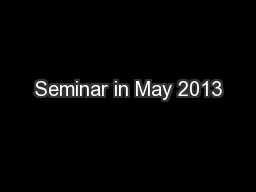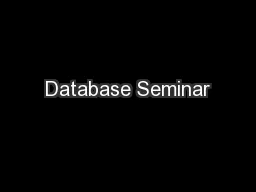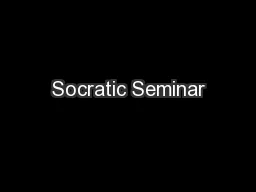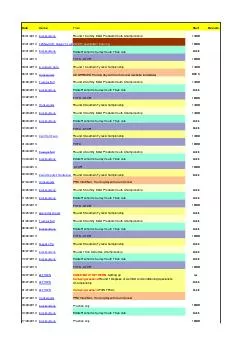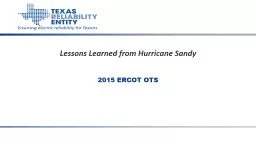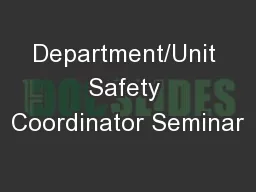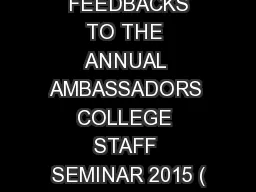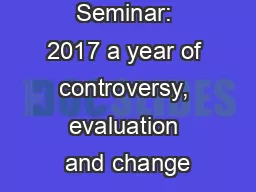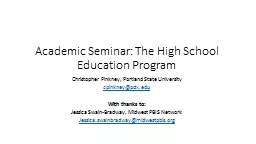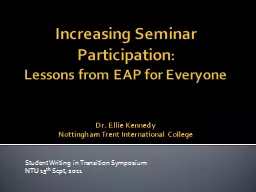PPT-Seminar in May 2013
Author : pasty-toler | Published Date : 2016-12-09
Leanne Girotto Neuro Developmental Therapist Help Children with Learning Problems Dyslexia Auditory Processing Disorder Autism Language Delay ADD Reading Writing
Presentation Embed Code
Download Presentation
Download Presentation The PPT/PDF document "Seminar in May 2013" is the property of its rightful owner. Permission is granted to download and print the materials on this website for personal, non-commercial use only, and to display it on your personal computer provided you do not modify the materials and that you retain all copyright notices contained in the materials. By downloading content from our website, you accept the terms of this agreement.
Seminar in May 2013: Transcript
Download Rules Of Document
"Seminar in May 2013"The content belongs to its owner. You may download and print it for personal use, without modification, and keep all copyright notices. By downloading, you agree to these terms.
Related Documents

